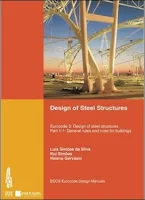Advanced Steel Design of Structures
Srinivasan Chandrasekaran ... 302 pages - Publisher: CRC Press; (November, 2019) ... Language: English - AmazonSIN: B07ZWFHLYP.
Advanced Steel Design of Structures examines the design principles of steel members under special loads and covers special geometric forms and conditions not typically presented in standard design books. It explains advanced concepts in a simple manner using numerous illustrative examples and MATLAB® codes.
Features: Provides analysis of members under unsymmetrical bending + Includes coverage of structures with special geometry and their use in offshore applications for ultra-deep water oil and gas exploration + Presents numerical modeling and analysis of steel members under fire conditions, impact, and blast loads + Includes MATLAB® examples that will aid in the capacity building of civil engineering students approaching this complex subject. Written for a broad audience, the presentation of design concepts of steel members will be suitable for upper-level undergraduate students. The advanced design theories for offshore structures under special loads will be an attractive feature for post-graduate students and researchers. Practicing engineers will also find the book useful, as it includes numerous solved examples and practical tutorials.
Features: Provides analysis of members under unsymmetrical bending + Includes coverage of structures with special geometry and their use in offshore applications for ultra-deep water oil and gas exploration + Presents numerical modeling and analysis of steel members under fire conditions, impact, and blast loads + Includes MATLAB® examples that will aid in the capacity building of civil engineering students approaching this complex subject. Written for a broad audience, the presentation of design concepts of steel members will be suitable for upper-level undergraduate students. The advanced design theories for offshore structures under special loads will be an attractive feature for post-graduate students and researchers. Practicing engineers will also find the book useful, as it includes numerous solved examples and practical tutorials.























